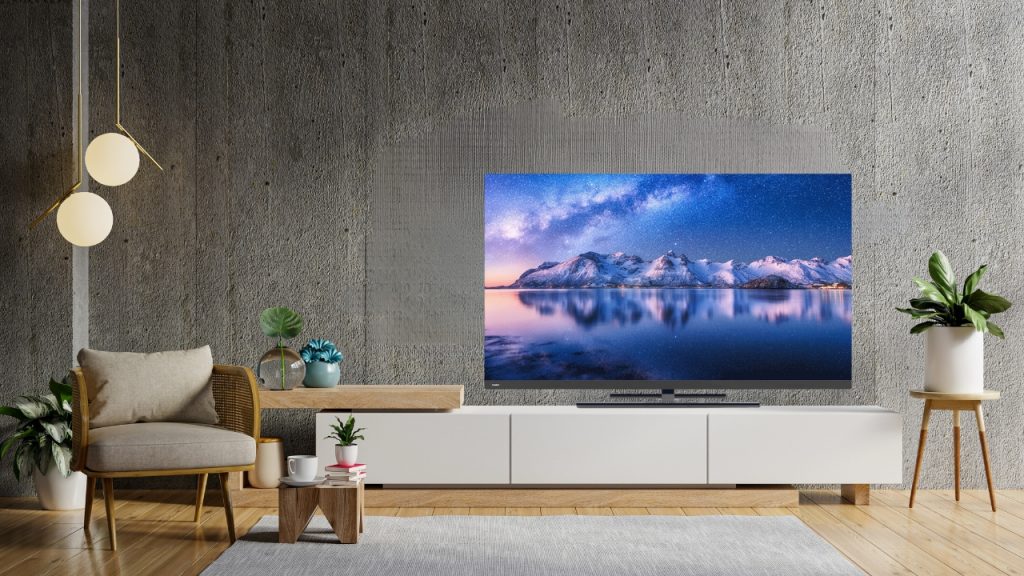In this technology driven world where on every step you have to deal with different types of technical terms, it gets difficult to understand what is the difference between these terms and what to prefer when going for buying electronic items. Shopping for right Television is one of the main concerns as its features include lots of technical jargon.
In this guide we are going to exclusively deal with LED, OLED and QLED television types. This is for you to understand the basic difference and which one to choose based on your preferences. So, Let’s get started!
The Main Types of Display in Television
LED vs. OLED vs. QLED are the main types of Display in Television which are predominant these days.The display in television is that component which visually represents media content like videos, images and any other graphical user experience.
It is the screen related technology that affects the image quality, color accuracy, brightness, contrast, and overall viewing experience.
By the description it is clear that the display is a critical aspect of television, as it directly impacts the viewer’s enjoyment.
Display technology has advanced rapidly in recent years, with LED, OLED, and QLED being the leading display types on the market.
But what exactly are the differences between these three technologies, and which one is best for you in 2024?
Let’s understand that by understanding the technology behind each of these categories and their advantages and disadvantages.
Understanding LED Technology: Revolutionizing Displays and Lighting

The full form of LED is light emitting diode. These LEDs illuminate the entire screen evenly, allowing you to see the picture. Let’s discuss in detail some of the advantages and disadvantages of LED TVs in detail.
Advantages of LEDs in 2024
- Affordability: Televisions based on LED display technology are generally the most pocket friendly options on the market. For example, there are good quality LED TVs under Rs.17,000 for a 32 inch screen.
- Picture quality: The LED backlighting provides even illumination across the entire screen, resulting in a very bright and vibrant image compared to older LCD TVs. This makes LED TVs a great choice for well-lit rooms.
- Great for gaming: LED TVs tend to have very low input lag, making them a great choice for fast-paced gaming experience where reaction times play a vital role. In addition to that, many LED TVs also support gaming-centric features like variable refresh rate.
- Energy efficiency: LED backlighting is more energy efficient as compared to older display technologies like plasma and CCFL LCD. This will help you save money on electricity costs in the longer run.
- Thin profiles: With the LED backlighting separating from the LCD panel, LED TVs can be very slim with virtually no bulge at the back. This makes their installation to the wall much easier and gives a better look.
Disadvantages of LEDs in 2024
- Narrow viewing angles: One of the biggest weaknesses of LED panels in general is their viewing angles. The picture quality decreases when viewed from the side at an angle.
- Can produce blooming: While LED TVs even have backlighting, they can sometimes produce a halo-like effect called blooming around bright objects on a dark background. But it is a rare phenomenon.
- Limited contrast ratios:Because the LED backlight is always on, LED TVs generally have poor black levels and contrast ratios compared to OLEDs. Dark scenes may look more washed out.
OLED Explained: The Future of Deep Contrast and Vivid Colors

OLED stands for organic light emitting diode. Rather than using a backlight like LED TVs, OLED TVs have pixels that emit their own light. This means when pixels are turned off, they are completely black.
Advantages of OLED TVs
- Perfect black levels: With self-emitting pixels, OLEDs can produce infinitely deep blacks when pixels are off. This creates an exceptional contrast ratio for vibrant, life-like images.
- Wide viewing angles: OLED screens maintain color accuracy and brightness uniformly across wide 178° viewing angles. You’ll get a great picture from anywhere you view the TV.
- Fast response time: OLED pixels can switch on and off instantly. Combined with low input lag, OLED TVs are well-suited for gaming and dynamic action scenes.
- Thin and flexible: OLED panels are thinner and lighter than any other television technology currently available. LG has even developed rollable OLED TVs.
- Great for dark room viewing: With no backlight, OLEDs produce no light bleed and have virtually no issues with blooming around bright objects. This makes them ideal for watching TV in the dark.
Disadvantages of OLED TVs
- Expensive: OLED TVs are the most expensive consumer display technology on the market..
- Brightness and Color: Although improved, OLEDs still can’t get as bright as premium LED/QLED TVs. Their colors are not as vibrant for well-lit rooms.
- Burn-in risk: Static images left on screen can permanently burn into OLED displays. This is mitigated by screen savers and built-in pixel refreshing, but the risk still exists.
- Shorter lifespan: The organic materials in OLEDs degrade over several years of use, although their lifespan has been improving. OLED TVs typically have a lifespan of around 5-7 years.
QLED Technology Unveiled: Brightness and Color Precision Redefined

QLED (quantum dot LED) is LED display technology enhanced by a quantum dot film. The quantum dots emit light when exposed to the blue LED backlight, creating brighter and more precise colors. Think of QLED as an advanced variant of LED TVs.
Advantages of QLED TVs
- Intense brightness – By using blue LED backlights with quantum dots, QLED TVs can achieve up to 2000 nits of peak brightness for incredible HDR performance that highlights details.
- Vibrant, accurate colors – Quantum dots allow QLED TVs to produce 100% color volume and rich, saturated colors that can be fine-tuned to industry standards like DCI-P3.
- Excellent for well-lit rooms – With their outstanding brightness and anti-reflective screens, QLED TVs are perfect for rooms with lots of light, like living rooms near windows.
- Great viewing angles – QLED TVs have viewing angles almost as wide as OLED, around 170° before color and brightness drop off.
- Long lifespan – QLED TVs use stable inorganic quantum dot materials that are designed to last the lifetime of the TV without burn-in issues. Expect over 50,000 hours of use.
- Gaming features – Top QLED TVs have gaming features like variable refresh rate, auto low latency mode, and integration with gaming consoles.
Disadvantages of QLED TVs
- LED backlight issues – While improved, QLEDs can still suffer from blooming and light bleed in dark scenes similar to conventional LED TVs. Black levels and contrast also can’t match OLED.
- Expensive – While cheaper than OLED, QLED TVs carry a significant price premium over regular LED TVs.
- Viewing angles – Despite being better than regular LED TVs, colors do still shift when viewing QLED TVs from extreme angles.
Discover the Latest in Television Display Tech with Haier India

Haier India offers tremendous options in the category of Television. In 2024, Smart TVs have become the obvious choice by the users. Hence, they have included all the options that might be the requirement of the hour.
Below listed are some of the popular display types by Haier India:
QLED 165cm (65) Smart Google TV With Far-Field & Local Dimming : This Model with 65 inch size and QLED display technology offers great picture quality. It is a Google TV with voice control through which you can find your favorite shows. It automatically adjusts the lightning which makes the picture quality just perfect.
OLED 140cm(55) With Harman Kardon : This Model offers a great picture quality with 55-inch size and OLED Display technology. This offers a cinematic experience with stunning clarity and colors. It ‘s like having a personal cinema, especially with the rich, high-quality sound from Harman Kardon speakers that fill the room. Additionally, the Smart AI TV feature suggests you next binge-watch. With just your voice, you can ask it to play music, control the TV, or even manage your smart home gadgets.
You can know about more options by exploring their website.
Below is a comparison chart between LED, OLED and QLED Display types to help you understand better the difference between different display types:
| Display Technology | LED | OLED | QLED |
| Backlight | Full array LED backlight | Self-emitting pixels | Blue LED with quantum dots |
| Black levels/contrast | Good | Excellent | Very good |
| Viewing angles | Mediocre | Excellent | Very good |
| Brightness | Very good | Good | Excellent |
| HDR performance | Good | Very good | Excellent |
| Color accuracy | Good | Very good | Excellent |
| Motion handling | Good | Excellent | Very good |
| Lifespan | Very long | Moderate | Very long |
| Burn-in risk | Very low | Moderate | Very low |
| Pricing | Lower than OLED | Lower than QLED | Higher Price than LED and OLED |
Summing Up!
Over the last few years the technology has changed drastically and for the sake of development. Display Types are one of the features of Television which has changed over time to enhance user experience. LED, OLED and QLED are the types of display technology that differ from each other in visual aspects. Each of them have their own advantages and disadvantages. By the help of this guide, you can compare each of them and decide which one of them will suit you the most.

